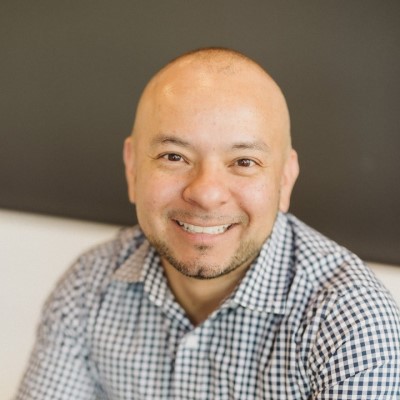
Why DEI Matters More Than Ever
The economic and existential crises wrought by COVID-19 had a profound effect on the nation’s workforce: According to the U.S. Bureau of Labor Statistics, more than 47 million Americans voluntarily left their jobs in 2021, an unprecedented exodus now known as the “Great Resignation.”
While workers quit for a variety of reasons, there’s no denying that COVID-imposed disruptions encouraged employees to think more critically about what they want and need in a work environment. According to a 2022 Pew Research Center survey, the top three reasons workers cited for leaving their jobs were low pay (63%), lack of opportunities for advancement (63%) and feeling disrespected at work (57%).

Dr. Mateo Cruz, an assistant professor of Management and organizational psychologist with more than 20 years’ experience researching and teaching about diversity, equity and inclusion (DEI) in corporate environments, isn’t surprised to hear these grievances — particularly the last one. “Unlike their parents and grandparents, today’s workers have more opportunities to challenge toxic workplace cultures,” he explains. “They can now actively seek out companies working to eliminate bias and discrimination and cultivate an environment where all employees feel valued and included.”
This is particularly true of younger workers, categorized as millennials (born between 1981 and 1996) and Gen Z (born between 1997 and 2012). Indeed, according to the recent Bentley University – Gallup Force for Good Survey, 84% of Americans ages 18-29 believe it’s important for businesses to promote DEI, compared with just 71% of workers ages 50-59. “Millennials and Gen Z are more likely to expect companies to address social inequalities in the workplace and their external environment than previous generations,” Cruz explains. “They’re more likely to express an equity mindset, so it’s easier for them to identify — and call out — injustice when they see it.”
RELATED: Explore more Bentley-Gallup Force for Good survey findings
Young Americans’ commitment to social justice is a direct reflection of the nation’s changing demographics. U.S. Census results from 1960 identified 88.6% of the nation’s population as white. Sixty years later, the 2020 U.S. Census revealed a population with significantly more racial and ethnic diversity: 60% white, 18% Hispanic, 12% Black or African American, 6% Asian, 0.6% Native American or Alaska Native, 0.2% Native Hawaiian or Pacific Islander, 3.3% two or more races and 0.5% other. And this diversification trend will continue: By 2045, according to official U.S. Census projections, the nation will be “minority white,” with whites accounting for just 49.7% of the total population.
This change is significant, Cruz says, because the dominant group in any society is the one empowered to establish cultural norms. Historically, American culture has prioritized whiteness, masculinity and heterosexuality, conferring power and privileges to those who possess these characteristics and limiting the influence and opportunities of those who don’t. American businesses subsequently codified these values — both explicitly and implicitly — within their organizational cultures, creating long-standing structural inequities for people of color, women and nonbinary individuals, and those who identify as LGBTQ+.
The landmark 1964 Civil Rights Act outlawed explicit bias in the workplace, making it illegal for employers to discriminate against workers “based on race, color, religion, sex and national origin,” but implicit bias remains. As Cruz notes, “Discrimination today is more subtly and insidiously expressed in interpersonal interactions,” such as complimenting an accented speaker on their English fluency or misgendering a trans or nonbinary colleague. “But the cumulative effect of these subtle behaviors remains significant, taking a huge psychological toll on employees from systemically marginalized groups.”
Recent and widespread social justice movements like #MeToo, Black Lives Matter and Stop AAPI Hate, which have called out systemic sexism and racism in American culture, have made businesses realize they need to do more to eliminate structural inequities within their organizational cultures. Yet, while many companies have since expanded or intensified their DEI initiatives — according to global consulting firm McKinsey, businesses worldwide spent $7.5 billion on DEI in 2020, an amount that’s expected to double to $15.4 billion by 2026 — those efforts have only marginally moved the needle: Among Fortune 500 companies in 2020, 90% of CEOs and more than 60% of board members were white men.
That’s not because companies don’t care about creating equitable and inclusive work environments, Cruz stresses. Indeed, research has shown that DEI is good for businesses’ bottom lines, suggesting that companies with more gender, racial and ethnic diversity among their leadership teams are more innovative and profitable than their less-diverse competitors. Business leaders also know that a more engaged workforce is a more productive workforce, he notes, and that “the key to fostering employee engagement is creating a truly inclusive culture, where everyone has an opportunity to contribute and succeed.”
So why are corporate DEI efforts failing to live up to expectations? As Cruz sees it, many companies are guilty of “checkbox diversity,” rushing to implement sweeping and ambitious workplace programs without first identifying their unique organizational needs. “DEI initiatives need to be intentional and data-driven,” he explains. “This requires companies to diagnose from a systems perspective, illuminating the DEI challenges and opportunities specific to their own workplace cultures.”
RELATED: 7 Ways to promote DEI in the workplace
It’s something Cruz knows from personal experience. Through his research and in the classroom, he’s encouraged countless companies to “discuss the undiscussables” and identify where inequities exist in their workforce. He says clients are often surprised by what they discover. For example, one company thought diversifying their talent pool was their primary challenge; however, after Cruz and Bentley students conducted a DEI diagnosis, they found it was geographic tensions between their rural and metropolitan offices that were creating barriers to cohesion. That’s why Cruz tells clients, “You have to address the problems you have now in the culture of your organization,” instead of making assumptions about the DEI outcomes you hope to achieve.
Cruz acknowledges that working to change organizational culture can often feel like a Herculean task: “There are no easy answers when it comes to DEI.” But the increasing and irrepressible diversification of the U.S. (and global) workforce demands that companies invest the time and effort to intentionally cultivate environments that celebrate, rather than censure, differences and make employees feel respected, valued and supported. As the Great Resignation has made clear, fostering inclusivity in the workplace has never been more critical; after all, Cruz says, “People don’t stay in places where they feel they don’t belong.”

